 Search by Keyword
|
"BIRTHDAY"
(John Lennon – Paul McCartney)
It's an established fact, known by many, that the songs that made up The Beatles "White Album" were written during their prolonged spring 1968 trip to India to study and practice Transcendental Meditation with the Maharishi. While this is mostly true, there were songs contained on the album that took shape before their India trip ("Piggies") as well as after ("Martha My Dear").
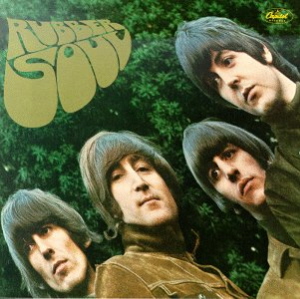 There is also a track on the album that fits into a very unique category; a song that was written 'instantaneously' in the studio the day it was recorded. The Beatles had always entered the recording studio with at least a partially written if not completely written song. A usual habit may have been to finish some lyrics during the recording process or alter a chord pattern or melody line here or there, or to define exactly what arrangement would be used on a particular song. But to enter into the studio and write a song from scratch and record it that very day while it was being written was unheard of for The Beatles up to that point. (Their attempt at an instrumental they tentatively called “12-Bar Original” could be considered an early try at writing and recording a song at the same time. However this November 4th, 1965 recording under consideration for the “Rubber Soul” album didn't amount to anything “original” at all and can be considered an aborted attempt at an "instantaneous" song.) There is also a track on the album that fits into a very unique category; a song that was written 'instantaneously' in the studio the day it was recorded. The Beatles had always entered the recording studio with at least a partially written if not completely written song. A usual habit may have been to finish some lyrics during the recording process or alter a chord pattern or melody line here or there, or to define exactly what arrangement would be used on a particular song. But to enter into the studio and write a song from scratch and record it that very day while it was being written was unheard of for The Beatles up to that point. (Their attempt at an instrumental they tentatively called “12-Bar Original” could be considered an early try at writing and recording a song at the same time. However this November 4th, 1965 recording under consideration for the “Rubber Soul” album didn't amount to anything “original” at all and can be considered an aborted attempt at an "instantaneous" song.)
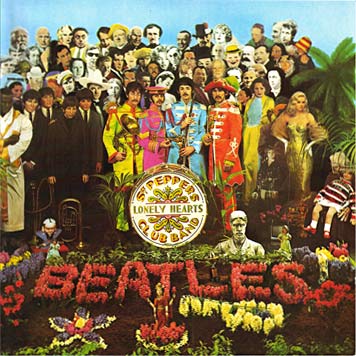 Experimentation was something that they had been known for throughout most of their career, culminating in 1967's masterpiece album “Sgt. Pepper's Lonely Hearts Club Band.” But in the case of the song “Birthday,” The Beatles broke new ground in being "instantaneous," as Paul described the song in 1968: A single day spent recording a new song created out of thin air! Experimentation was something that they had been known for throughout most of their career, culminating in 1967's masterpiece album “Sgt. Pepper's Lonely Hearts Club Band.” But in the case of the song “Birthday,” The Beatles broke new ground in being "instantaneous," as Paul described the song in 1968: A single day spent recording a new song created out of thin air!
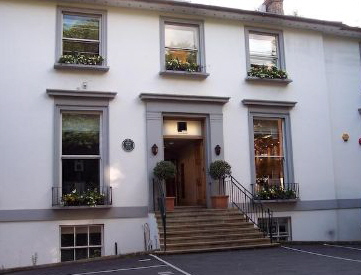
EMI (Abbey Road) Studios
Songwriting History
On September 18th, 1968, Paul arrived early at EMI Studio Two for a recording session, at 5 pm, and decided to sit down at the upright piano and begin to formulate a new song to bide his time. Since there were a good amount of newly written songs that The Beatles demoed at George's "Kinfauns" home that they hadn't officially recorded yet for their album, they probably had one of those songs in mind to be recorded on this day. But with Paul's new song inspiration, a decision was made to forego their original plan for the day and develop this song instead.
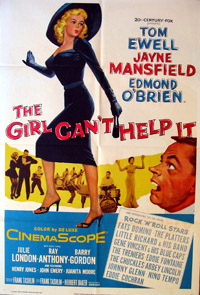 But why was the recording session bumped up to 5 o'clock instead of the usual 7 o'clock? Chris Thomas, who was filling in as producer for the vacationing George Martin, explains: “I had mentioned to Paul a couple of days earlier about 'The Girl Can't Help It' being on television during this evening.” The classic 1956 musical comedy “The Girl Can't Help It” was seen by The Beatles individually during its original seven week screening at the Scala Cinema in Liverpool in March and April, 1957. This Jayne Mansfield and Tom Ewell film was highly influential for the young future Beatles especially because of its inclusion of various performances by their rock 'n' roll heroes, many of which they had never seen in the flesh before. One of these heroes was Eddie Cochran, whose song "Twenty Flight Rock" was perfectly performed by Paul in July of 1957 to impress John, this event leading to their working as a musical team. September 18th, 1968, was the first time this movie was shown on British television, being broadcast on BBC2 between 9:05 and 10:40 pm in the series called “The Hollywood Musical." And since almost no one at that time had any means of recording a television program, this 1968 broadcast was an unmissable event! But why was the recording session bumped up to 5 o'clock instead of the usual 7 o'clock? Chris Thomas, who was filling in as producer for the vacationing George Martin, explains: “I had mentioned to Paul a couple of days earlier about 'The Girl Can't Help It' being on television during this evening.” The classic 1956 musical comedy “The Girl Can't Help It” was seen by The Beatles individually during its original seven week screening at the Scala Cinema in Liverpool in March and April, 1957. This Jayne Mansfield and Tom Ewell film was highly influential for the young future Beatles especially because of its inclusion of various performances by their rock 'n' roll heroes, many of which they had never seen in the flesh before. One of these heroes was Eddie Cochran, whose song "Twenty Flight Rock" was perfectly performed by Paul in July of 1957 to impress John, this event leading to their working as a musical team. September 18th, 1968, was the first time this movie was shown on British television, being broadcast on BBC2 between 9:05 and 10:40 pm in the series called “The Hollywood Musical." And since almost no one at that time had any means of recording a television program, this 1968 broadcast was an unmissable event!
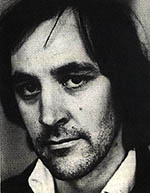 Chris Thomas continues: “The idea was to start the session earlier than usual, about five o'clock in the afternoon, and then all nip around the corner to Paul's house in Cavendish Avenue, watch the film and go back to work. So on the day Paul was the first one in, and he was playing the 'Birthday' riff. Eventually the others arrived, by which time Paul had literally written the song, right there in the studio. We had the backing track down by about 8:30, popped around to watch the film as arranged and then came back and actually finished the whole song. It was all done in a day!” From this explanation we can deduce that Paul probably began writing the song “Birthday” as inspired by his excitement at seeing “The Girl Can't Help It” a little later that day. "We often started a session with a riff," explained Paul in his book "The Lyrics" "And for us the riff of riffs was Little Richard's 'Lucille.' It's the riff Roy Orbison adapted for 'Pretty Woman.' So we did the same thing for 'Birthday.' All very basic stuff." Chris Thomas continues: “The idea was to start the session earlier than usual, about five o'clock in the afternoon, and then all nip around the corner to Paul's house in Cavendish Avenue, watch the film and go back to work. So on the day Paul was the first one in, and he was playing the 'Birthday' riff. Eventually the others arrived, by which time Paul had literally written the song, right there in the studio. We had the backing track down by about 8:30, popped around to watch the film as arranged and then came back and actually finished the whole song. It was all done in a day!” From this explanation we can deduce that Paul probably began writing the song “Birthday” as inspired by his excitement at seeing “The Girl Can't Help It” a little later that day. "We often started a session with a riff," explained Paul in his book "The Lyrics" "And for us the riff of riffs was Little Richard's 'Lucille.' It's the riff Roy Orbison adapted for 'Pretty Woman.' So we did the same thing for 'Birthday.' All very basic stuff."
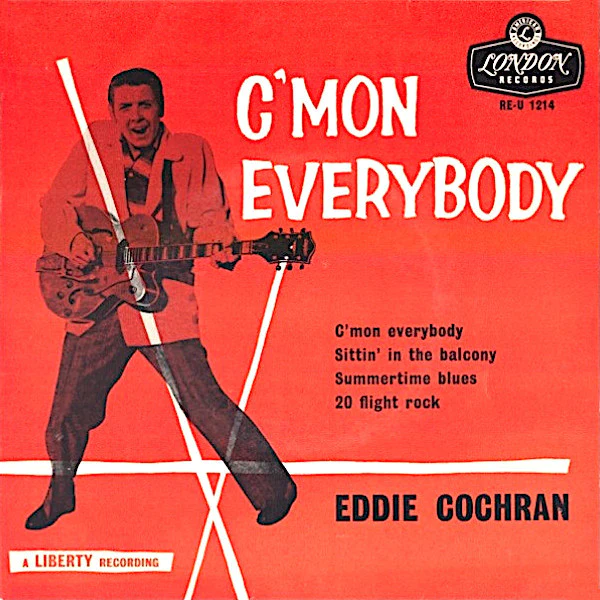 “The film 'The Girl Can't Help It' was on television, an old rock film,” Paul explained in 1968. “Fats Domino, Gene Vincent and Eddie Cochran were in it, and we wanted to see it, so we started at 5 o'clock and just did a backing track, a very simple 12-bar blues thing with a few bits here and there. We had no idea what it was going to be or what was going to go on top of it. We'd just say, '12 bars in A,' and then we'd change to D, then we'd do a few beats in C. And we really just did it like that...a random thing. We didn't have time for anything else. Then we went back to my house, watched the film and then went back to the studio and made up some words to go with it all, which were, 'They say it's your birthday, well, it's my birthday too, yay.' This song was just made up in an evening. We hadn't ever thought of it before then. It's one of my favorites, because it was instantaneous. Also, it's a good one to dance to. As for the big long drum break, normally we might have four bars of drums, but, with this, we thought, 'No, let's keep it going.' We all like to hear drums plodding on.” “The film 'The Girl Can't Help It' was on television, an old rock film,” Paul explained in 1968. “Fats Domino, Gene Vincent and Eddie Cochran were in it, and we wanted to see it, so we started at 5 o'clock and just did a backing track, a very simple 12-bar blues thing with a few bits here and there. We had no idea what it was going to be or what was going to go on top of it. We'd just say, '12 bars in A,' and then we'd change to D, then we'd do a few beats in C. And we really just did it like that...a random thing. We didn't have time for anything else. Then we went back to my house, watched the film and then went back to the studio and made up some words to go with it all, which were, 'They say it's your birthday, well, it's my birthday too, yay.' This song was just made up in an evening. We hadn't ever thought of it before then. It's one of my favorites, because it was instantaneous. Also, it's a good one to dance to. As for the big long drum break, normally we might have four bars of drums, but, with this, we thought, 'No, let's keep it going.' We all like to hear drums plodding on.”
 In his book “Many Years From Now,” Paul elaborates further: "We thought, 'Why not make something up?' So we got a riff going and arranged it around this riff. We said, 'We'll go to there for a few bars, then we'll do this for a few bars.' We added some lyrics, then we got the friends who were there to join in on the chorus. So that is 50-50 John and me, made up on the spot and recorded all on the same evening. I don't recall it being anybody's birthday in particular but it might have been, but the other reason for doing it is that, if you have a song that refers to Christmas or a birthday, it adds to the life of the song, if it's a good song, because people will pull it out on birthday shows, so I think there was a little bit of that at the back of our minds." In his book “Many Years From Now,” Paul elaborates further: "We thought, 'Why not make something up?' So we got a riff going and arranged it around this riff. We said, 'We'll go to there for a few bars, then we'll do this for a few bars.' We added some lyrics, then we got the friends who were there to join in on the chorus. So that is 50-50 John and me, made up on the spot and recorded all on the same evening. I don't recall it being anybody's birthday in particular but it might have been, but the other reason for doing it is that, if you have a song that refers to Christmas or a birthday, it adds to the life of the song, if it's a good song, because people will pull it out on birthday shows, so I think there was a little bit of that at the back of our minds."
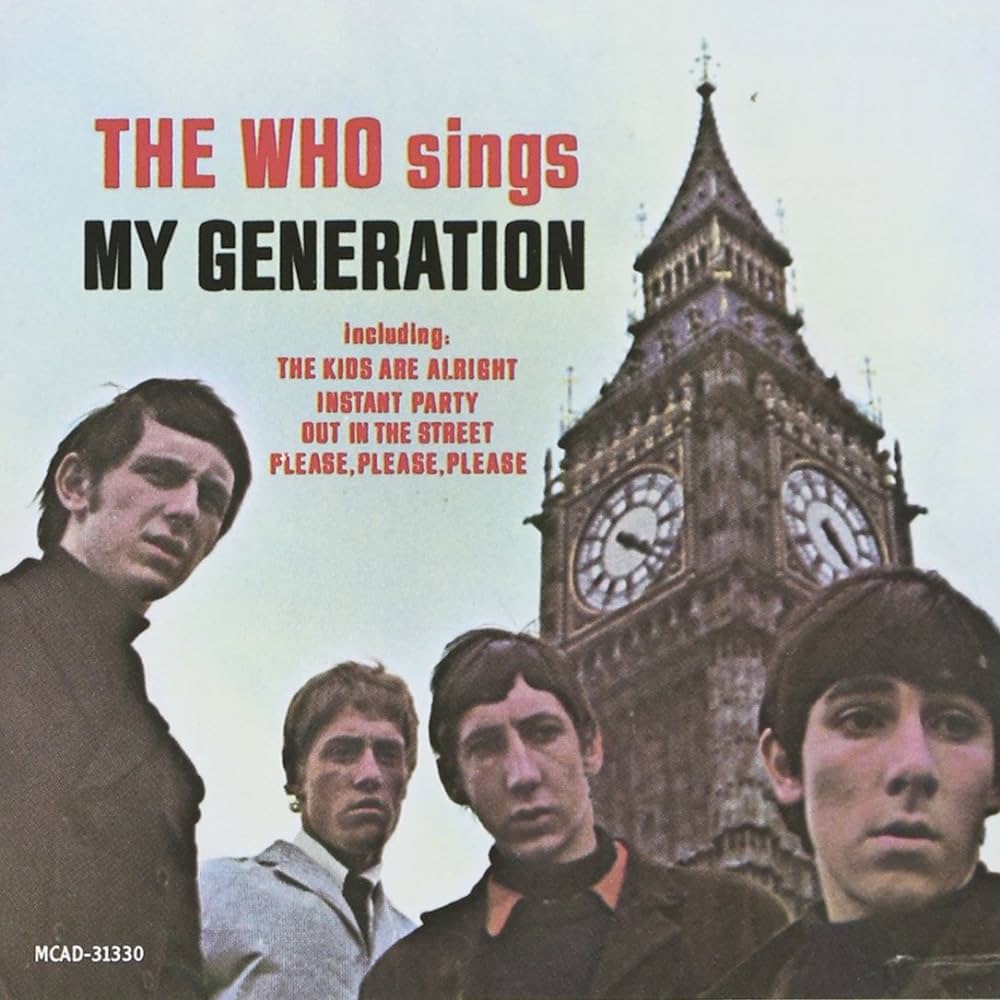 Even though The Beatles had ceased touring two years earlier, Paul apparently was thinking about their returning to the stage at some point in the near future. In his book "The Lyrics," he continues: "'Birthday' is one of those songs that was written to be played in a live show - with a view to being performed...because there's always someone who's got a birthday. Some of my songs have functions above and beyond merely getting themselves into the world." As for lyrical ideas, Paul relates: "Two of the lines I'd focus on are 'I would like you to dance / take a cha-cha-cha-chance.' I'm reminded that another band that was very much to the fore then was The Who. They had a very memorable moment in 'My Generation,' which involved what we used to call a stammer or a stutter on the phrase 'fade away.' But when you go 'f-f-f-f'' on live British television, that gets people's attention. I remember that moment quite vividly. And that impediment, let's call it, informed the 'cha-cha-cha' in 'Birthday," just as 'Birthday' informed the 'cha-cha-cha-cha' in David Bowie's 'Changes.' Being a songwriter is about picking up the baton and holding it for a while and then passing it on." Even though The Beatles had ceased touring two years earlier, Paul apparently was thinking about their returning to the stage at some point in the near future. In his book "The Lyrics," he continues: "'Birthday' is one of those songs that was written to be played in a live show - with a view to being performed...because there's always someone who's got a birthday. Some of my songs have functions above and beyond merely getting themselves into the world." As for lyrical ideas, Paul relates: "Two of the lines I'd focus on are 'I would like you to dance / take a cha-cha-cha-chance.' I'm reminded that another band that was very much to the fore then was The Who. They had a very memorable moment in 'My Generation,' which involved what we used to call a stammer or a stutter on the phrase 'fade away.' But when you go 'f-f-f-f'' on live British television, that gets people's attention. I remember that moment quite vividly. And that impediment, let's call it, informed the 'cha-cha-cha' in 'Birthday," just as 'Birthday' informed the 'cha-cha-cha-cha' in David Bowie's 'Changes.' Being a songwriter is about picking up the baton and holding it for a while and then passing it on."
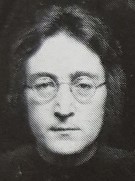 In John Lennon's 1972 Hit Parader magazine interview, he concurs that “Birthday” was written by “both of us.” He disclaims this somewhat in his 1980 Playboy magazine interview, in which he states “Paul wanted to write a song about birthdays, so he did that one.” In John Lennon's 1972 Hit Parader magazine interview, he concurs that “Birthday” was written by “both of us.” He disclaims this somewhat in his 1980 Playboy magazine interview, in which he states “Paul wanted to write a song about birthdays, so he did that one.”
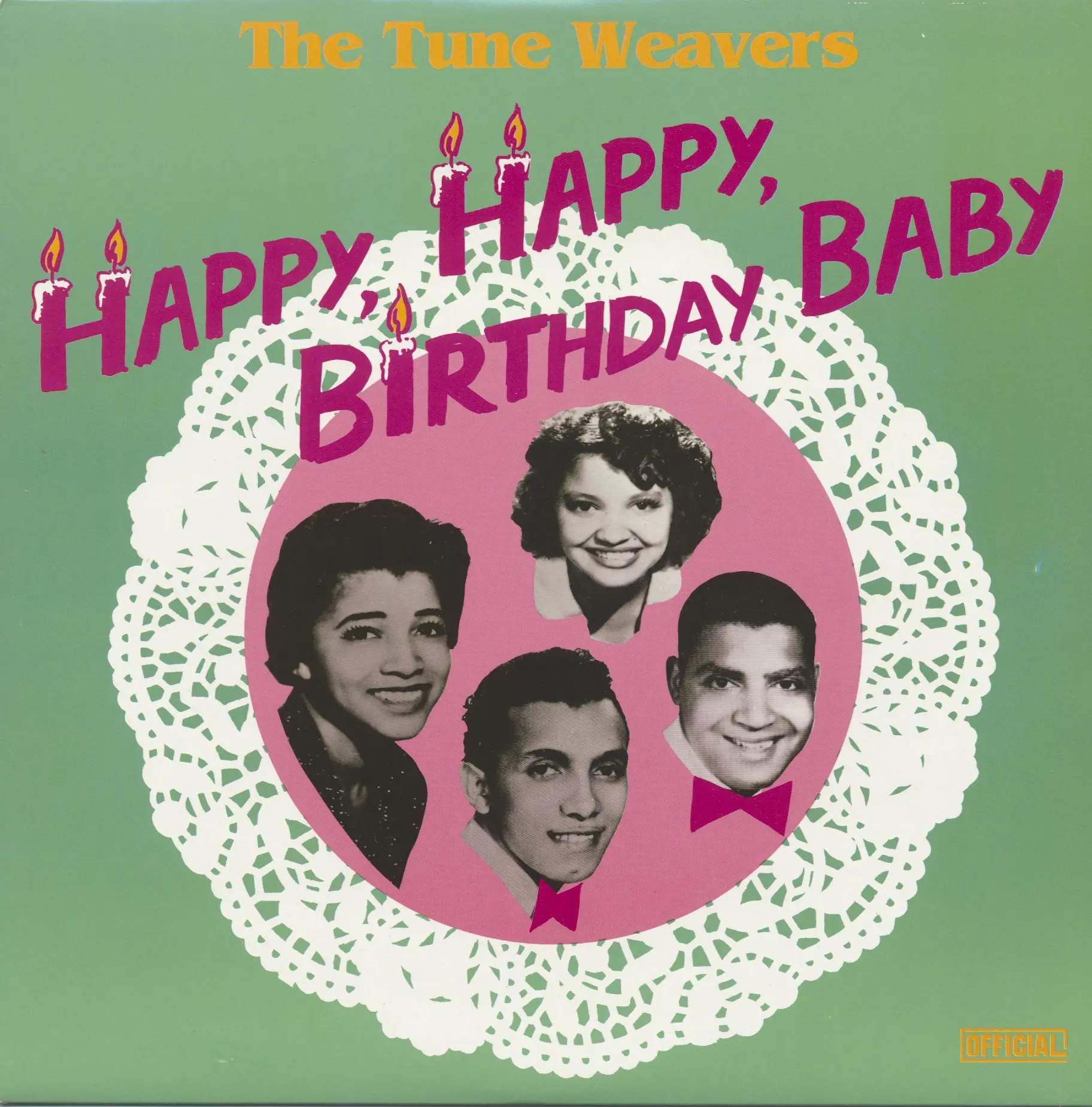 Interestingly, John's quote, as it appeared in the actual Playboy magazine, says that the song was written in India right along with all the other “White Album” compositions, explaining the details of their visit in the process: “Once we had our mantra, we sat in the mountains eating lousy vegetarian food with a lot of time to write all those songs. Paul wanted to write a song about birthdays.” Elsewhere, though, the following quote is credited to John about the song during this same interview session: “'Birthday' was written in the studio. Just made up on the spot. I think Paul wanted to write a song like 'Happy, Happy Birthday Baby,' the old '50s hit (by The Tune Weavers, US #5, 1957). But it was, sort of, made up in the studio.” However, John's opinion of the song was made clear: “It was a piece of garbage.” I assume most Beatles fans would disagree. Interestingly, John's quote, as it appeared in the actual Playboy magazine, says that the song was written in India right along with all the other “White Album” compositions, explaining the details of their visit in the process: “Once we had our mantra, we sat in the mountains eating lousy vegetarian food with a lot of time to write all those songs. Paul wanted to write a song about birthdays.” Elsewhere, though, the following quote is credited to John about the song during this same interview session: “'Birthday' was written in the studio. Just made up on the spot. I think Paul wanted to write a song like 'Happy, Happy Birthday Baby,' the old '50s hit (by The Tune Weavers, US #5, 1957). But it was, sort of, made up in the studio.” However, John's opinion of the song was made clear: “It was a piece of garbage.” I assume most Beatles fans would disagree.
Recording History
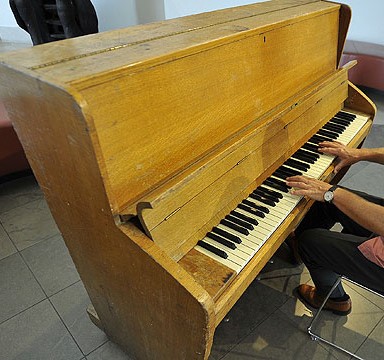 As stated above, the one and only recording session that was needed to complete the song "Birthday" was held on September 18th, 1968, in EMI Studio Two beginning at 5 pm. After Paul worked out the song's riff on piano and the other Beatles arrived, it was time to work out the song's structure and record the backing track before adjourning to Paul's house to watch the movie "The Girl Can't Help It." As stated above, the one and only recording session that was needed to complete the song "Birthday" was held on September 18th, 1968, in EMI Studio Two beginning at 5 pm. After Paul worked out the song's riff on piano and the other Beatles arrived, it was time to work out the song's structure and record the backing track before adjourning to Paul's house to watch the movie "The Girl Can't Help It."
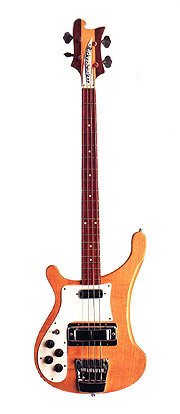 At approximately 6 pm, the first of 20 takes of the rhythm track began to be recorded onto a four-track tape, the tape box indicating the instrumentation as John on electric guitar (track one), Ringo on drums (track two), Paul on bass (track three) and George on electric guitar (track four). In the verses, John played the lower octave guitar riff while George played a similar riff in a higher octave, both playing similar roles during the instrumental break and differing rhythm parts in the remaining sections of the song. Many of these takes were false starts and breakdowns, which makes sense since they were writing the song as they were recording it. At approximately 6 pm, the first of 20 takes of the rhythm track began to be recorded onto a four-track tape, the tape box indicating the instrumentation as John on electric guitar (track one), Ringo on drums (track two), Paul on bass (track three) and George on electric guitar (track four). In the verses, John played the lower octave guitar riff while George played a similar riff in a higher octave, both playing similar roles during the instrumental break and differing rhythm parts in the remaining sections of the song. Many of these takes were false starts and breakdowns, which makes sense since they were writing the song as they were recording it.
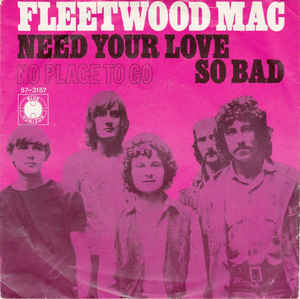 "Take two," as featured on the Super Deluxe 50th Anniversary "White Album" box set, shows Paul counting down the song and then yelling a countdown of the eight measures Ringo was pounding out as a solo just after the second verse in order to signal when the rest of them were to come back in. John's guitar is heard in the left channel and George's is in the right channel, this version being mixed this way to differentiate both performances. John flubs his guitar riff in the instrumental break while George elaborates nicely in his rhythm guitar parts throughout. The song concludes somewhat similar to many early Beatles rockers, such as "What Goes On?", indicating that they hadn't quite decided how it should end. Interestingly, before "take 15" begins, John is heard picking out the opening riff of the current British hit "Need Your Love So Bad" by Fleetwood Mac, originally written and recorded by Little Willie John. "Take two," as featured on the Super Deluxe 50th Anniversary "White Album" box set, shows Paul counting down the song and then yelling a countdown of the eight measures Ringo was pounding out as a solo just after the second verse in order to signal when the rest of them were to come back in. John's guitar is heard in the left channel and George's is in the right channel, this version being mixed this way to differentiate both performances. John flubs his guitar riff in the instrumental break while George elaborates nicely in his rhythm guitar parts throughout. The song concludes somewhat similar to many early Beatles rockers, such as "What Goes On?", indicating that they hadn't quite decided how it should end. Interestingly, before "take 15" begins, John is heard picking out the opening riff of the current British hit "Need Your Love So Bad" by Fleetwood Mac, originally written and recorded by Little Willie John.
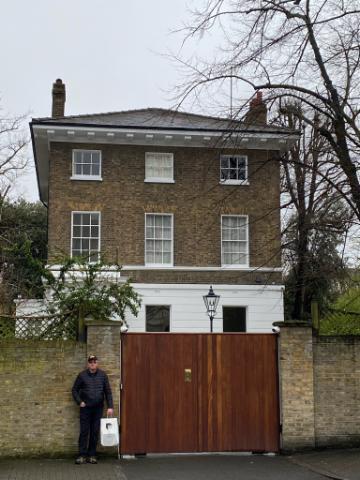 "Take 20" was deemed the best, this take also featuring Paul shouting a countdown from one to eight off microphone during the drum break after the second verse. At around 8:30, after they were all satisfied with this rhythm track, all in attendance, producer Chris Thomas and George's wife Pattie included, went just down the street to Paul's house at 17 Cavendish Avenue just in time for the start of the movie. "Take 20" was deemed the best, this take also featuring Paul shouting a countdown from one to eight off microphone during the drum break after the second verse. At around 8:30, after they were all satisfied with this rhythm track, all in attendance, producer Chris Thomas and George's wife Pattie included, went just down the street to Paul's house at 17 Cavendish Avenue just in time for the start of the movie.
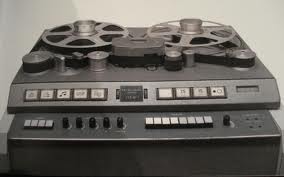 After the movie was over, they all filed back into EMI Studio Two for more work on “Birthday,” having been inspired by the film to create the best “rocker” they could muster. Since the rhythm track was recorded on a four-track machine, a tape copy of "take 20" needed to be done to transfer the rhythm track to their eight-track machine in order to open up more tracks for overdubs. Two attempts were made, the second (“take 22”) being used for the overdubbing. After the movie was over, they all filed back into EMI Studio Two for more work on “Birthday,” having been inspired by the film to create the best “rocker” they could muster. Since the rhythm track was recorded on a four-track machine, a tape copy of "take 20" needed to be done to transfer the rhythm track to their eight-track machine in order to open up more tracks for overdubs. Two attempts were made, the second (“take 22”) being used for the overdubbing.
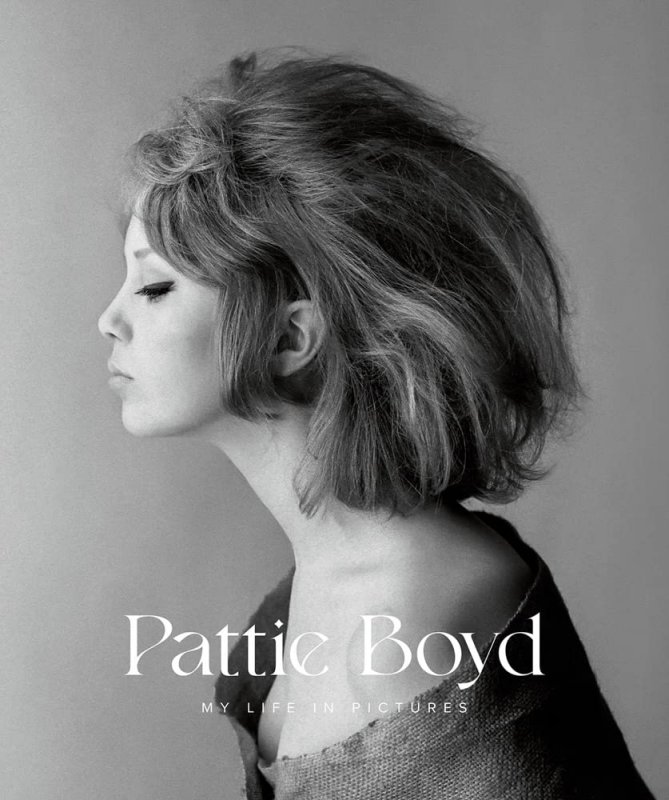 The overdubs included Paul's “Long Tall Sally”-like lead vocal, John's lead and backing vocal, and handclaps by Ringo and Mal Evans, all being added to tracks seven and eight. According to Mal Evans' review in a 1968 edition of "The Beatles Monthly," track six contained "George playing tambourine with a gloved hand to avoid getting more blisters." "I remember Pattie Boyd, George Harrison's wife, was there," Paul remembers in his book "The Lyrics," adding, "I'm pretty sure Eric Clapton was around. Normally there weren't visitors in the studio, but this was some sort of occasion." These visitors became backing vocalists on the song, singing “Birthday” three times during each of the two bridges, presumably also onto track six. The overdubs included Paul's “Long Tall Sally”-like lead vocal, John's lead and backing vocal, and handclaps by Ringo and Mal Evans, all being added to tracks seven and eight. According to Mal Evans' review in a 1968 edition of "The Beatles Monthly," track six contained "George playing tambourine with a gloved hand to avoid getting more blisters." "I remember Pattie Boyd, George Harrison's wife, was there," Paul remembers in his book "The Lyrics," adding, "I'm pretty sure Eric Clapton was around. Normally there weren't visitors in the studio, but this was some sort of occasion." These visitors became backing vocalists on the song, singing “Birthday” three times during each of the two bridges, presumably also onto track six.
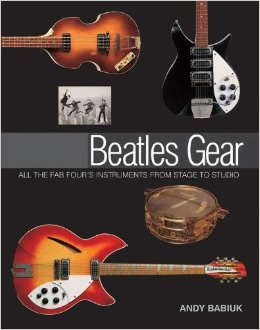 Onto track five of the tape was recorded some more tambourine, some snare drum beats, and another element that is quite unique and is explained differently by different sources. Bruce Spizer's book “The Beatles On Apple Records” describes it as “Paul's piano through a Leslie speaker.” John Lennon described it in his Playboy interview as “one interesting sound...We put the piano through a guitar amplifier and put the tremolo in, which may have been the first time that happened.” Ian MacDonald's book “Revolution In The Head” described it as a “heavily filtered and flanged piano.” Mal Evans described it at the time in the above mentioned “The Beatles Monthly” magazine as a “curious sound, a carefully prepared upright piano played by Paul – 'prepared' to give it a very special sound with reverberation, wow-wow and technical things like that.” Andy Babiuk's book “Beatles Gear” said that it “was more likely produced by the three settings of the MRB (mid-range boost) control fitted to some Vox amplifiers of the period.” Onto track five of the tape was recorded some more tambourine, some snare drum beats, and another element that is quite unique and is explained differently by different sources. Bruce Spizer's book “The Beatles On Apple Records” describes it as “Paul's piano through a Leslie speaker.” John Lennon described it in his Playboy interview as “one interesting sound...We put the piano through a guitar amplifier and put the tremolo in, which may have been the first time that happened.” Ian MacDonald's book “Revolution In The Head” described it as a “heavily filtered and flanged piano.” Mal Evans described it at the time in the above mentioned “The Beatles Monthly” magazine as a “curious sound, a carefully prepared upright piano played by Paul – 'prepared' to give it a very special sound with reverberation, wow-wow and technical things like that.” Andy Babiuk's book “Beatles Gear” said that it “was more likely produced by the three settings of the MRB (mid-range boost) control fitted to some Vox amplifiers of the period.”
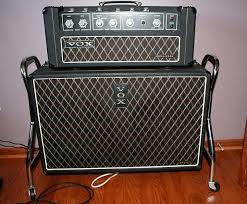 Kevin Howlett, author of the "Track By Track" notes found in the "White Album" 50th Anniversary box set, confirms that the piano sound was made by running it through a Vox Conqueror guitar amplifier and speaker cabinet which has a mid-range boost (MRB) function that jumps between the frequencies. After suggesting this effect, Ken Scott was recruited to make it work. "I plugged it up to show them what I meant," Ken explains. "When John heard it, he immediately said, 'Yeah, that's great - You do it,' and made me stay there turning the knob in time with the beat. I was terrified looking up at the window and seeing them all staring down at me while hoping that my time (keeping) was on (the beat.)." The piano with this effect can be heard especially during the instrumental section (after the first bridge) and as the final chord rings out during the song's conclusion. Kevin Howlett, author of the "Track By Track" notes found in the "White Album" 50th Anniversary box set, confirms that the piano sound was made by running it through a Vox Conqueror guitar amplifier and speaker cabinet which has a mid-range boost (MRB) function that jumps between the frequencies. After suggesting this effect, Ken Scott was recruited to make it work. "I plugged it up to show them what I meant," Ken explains. "When John heard it, he immediately said, 'Yeah, that's great - You do it,' and made me stay there turning the knob in time with the beat. I was terrified looking up at the window and seeing them all staring down at me while hoping that my time (keeping) was on (the beat.)." The piano with this effect can be heard especially during the instrumental section (after the first bridge) and as the final chord rings out during the song's conclusion.
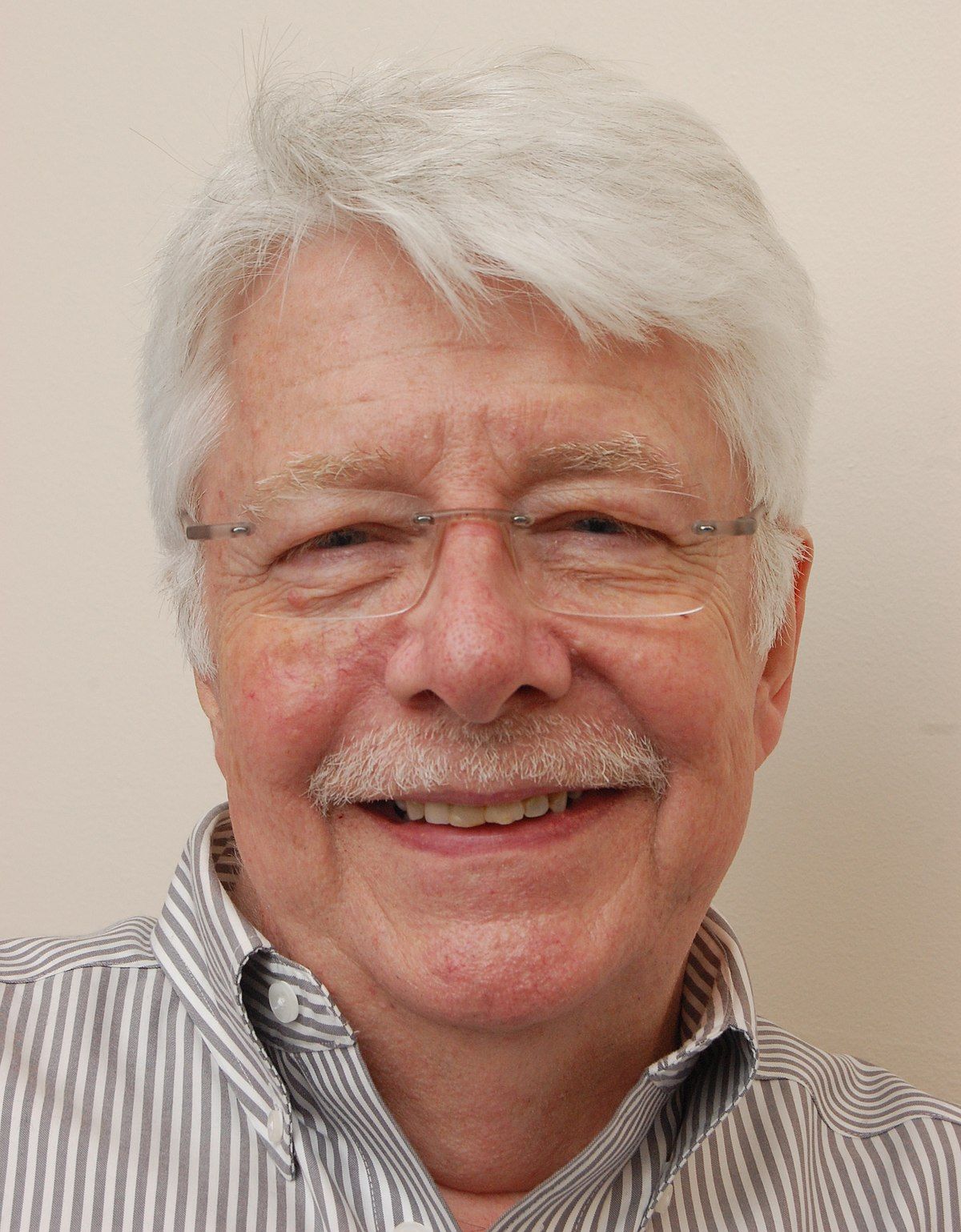 By 4:30 the following morning, this fun song was complete and, between 4:30 and 5 am, the mono mix was created in the control room of EMI Studio Two by Chris Thomas and engineers Ken Scott and Mike Sheady. This one and only attempt at the mono mix being done, everyone had by then filed out of the studio, it having been a very productive day indeed! By 4:30 the following morning, this fun song was complete and, between 4:30 and 5 am, the mono mix was created in the control room of EMI Studio Two by Chris Thomas and engineers Ken Scott and Mike Sheady. This one and only attempt at the mono mix being done, everyone had by then filed out of the studio, it having been a very productive day indeed!
 The stereo mix wasn't created until October 14th, 1968, this being done by the returning producer George Martin along with Ken Scott and John Smith in the control room of EMI Studio Two, only one attempt being needed. The only noticeable difference between the two is toward the end of the song when Paul screams out “daaaaance” just before the final verse. On the stereo mix, it is heard twice, possibly because of a faulty edit, but in the mono version, one of them is covered over by other elements of the recording. The stereo mix wasn't created until October 14th, 1968, this being done by the returning producer George Martin along with Ken Scott and John Smith in the control room of EMI Studio Two, only one attempt being needed. The only noticeable difference between the two is toward the end of the song when Paul screams out “daaaaance” just before the final verse. On the stereo mix, it is heard twice, possibly because of a faulty edit, but in the mono version, one of them is covered over by other elements of the recording.
 Sometime in 2018, Giles Martin and engineer Sam Okell returned to the master tape of "Birthday" to create a vibrant new stereo mix for inclusion on the various 50th Anniversary "White Album" releases. For good measure, they also created a stereo mix of "take two," mentioned above, for inclusion in the Super Deluxe box set edition. Sometime in 2018, Giles Martin and engineer Sam Okell returned to the master tape of "Birthday" to create a vibrant new stereo mix for inclusion on the various 50th Anniversary "White Album" releases. For good measure, they also created a stereo mix of "take two," mentioned above, for inclusion in the Super Deluxe box set edition.
On June 30th, 1990, a live recording of “Birthday” by Paul and his band was done at Knebworth Park in Stevenage, England, this version included on his live album “Tripping The Live Fantastic.”
Song Structure and Style
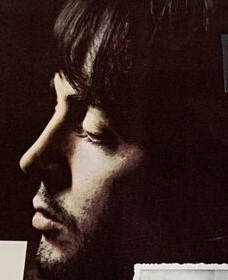 At first glance, the structure of "Birthday" gives the impression of being a standard 12-bar blues. However, as Paul explained above, they decided haphazardly to proceed in different directions as they were putting the song together in the studio. Paul's statement, "We said, 'We'll go to there for a few bars, then we'll do this for a few bars,'" becomes very apparent when the structure is examined. It parses out to 'verse (instrumental)/ verse/ pre-bridge/ bridge/ verse (instrumental)/ segue/ bridge/ verse' (or aabcadca). At first glance, the structure of "Birthday" gives the impression of being a standard 12-bar blues. However, as Paul explained above, they decided haphazardly to proceed in different directions as they were putting the song together in the studio. Paul's statement, "We said, 'We'll go to there for a few bars, then we'll do this for a few bars,'" becomes very apparent when the structure is examined. It parses out to 'verse (instrumental)/ verse/ pre-bridge/ bridge/ verse (instrumental)/ segue/ bridge/ verse' (or aabcadca).
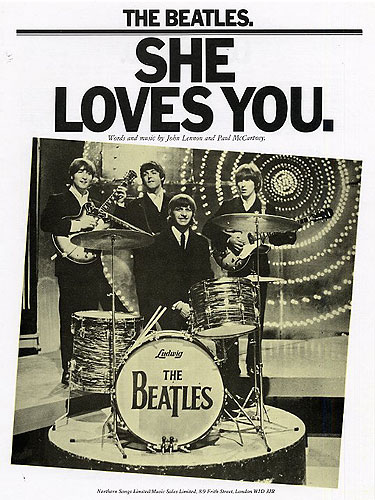 The proceedings kick off with a quick left-handed drum roll from Ringo not unlike the one he performed as the introduction to “She Loves You” five years earlier. From here we enter into the first verse which is strictly instrumental, this verse being twelve measures in length. The elements consist of the rhythm track, which is John on lead guitar playing the lower octave riff, Paul mimicking him on bass (which we also hear during the open spaces between the riffs) and Ringo's exuberant drums. George's lead guitar is also present, playing the higher octave version of the riff simultaneous to what John is playing. The proceedings kick off with a quick left-handed drum roll from Ringo not unlike the one he performed as the introduction to “She Loves You” five years earlier. From here we enter into the first verse which is strictly instrumental, this verse being twelve measures in length. The elements consist of the rhythm track, which is John on lead guitar playing the lower octave riff, Paul mimicking him on bass (which we also hear during the open spaces between the riffs) and Ringo's exuberant drums. George's lead guitar is also present, playing the higher octave version of the riff simultaneous to what John is playing.
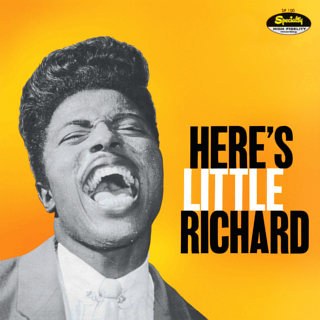 The second verse then follows which is also twelve measures in length, the only difference between the first and the second being the addition of Paul and John's harmony lead vocals, Paul's higher Little Richard impersonation being more prominent. The second verse then follows which is also twelve measures in length, the only difference between the first and the second being the addition of Paul and John's harmony lead vocals, Paul's higher Little Richard impersonation being more prominent.
Then the song goes into what we'll call a 'pre-bridge,' which can be divided into two parts of eight measures each, totaling 16 measures in full. The first eight measures consist entirely of Ringo on pounding drums, George on tambourine and Paul shouting out a count of the first eight measures off microphone (and no, these utterances are not masked clues about his supposed death).
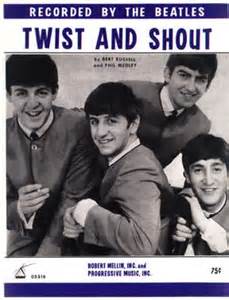 The second eight measures of this section are especially powerful, possibly the heaviest The Beatles have ever sounded. Both John and George play power chords on electric guitars with Ringo on drums and Paul on bass, while George's tambourine is still banging away and the hand-clapping of Ringo and Mal Evans is going at it in full force on eighth-note beats. After a fast snare drum fill from Ringo at the end of the tenth measure, John is the first vocal to he heard in the eleventh measure (“Yes, we're going to a party, party”) while Paul and George chime in on harmony in their successive turns, reprising the “aah” harmony format they so successfully performed on “Twist And Shout” five-and-a-half years earlier. With the tension rising to an all time high in the fifteenth and sixteenth measures, Ringo accents the snare beats on sixteenth notes which transcend into a snare drum roll at the end of the final measure. The second eight measures of this section are especially powerful, possibly the heaviest The Beatles have ever sounded. Both John and George play power chords on electric guitars with Ringo on drums and Paul on bass, while George's tambourine is still banging away and the hand-clapping of Ringo and Mal Evans is going at it in full force on eighth-note beats. After a fast snare drum fill from Ringo at the end of the tenth measure, John is the first vocal to he heard in the eleventh measure (“Yes, we're going to a party, party”) while Paul and George chime in on harmony in their successive turns, reprising the “aah” harmony format they so successfully performed on “Twist And Shout” five-and-a-half years earlier. With the tension rising to an all time high in the fifteenth and sixteenth measures, Ringo accents the snare beats on sixteenth notes which transcend into a snare drum roll at the end of the final measure.
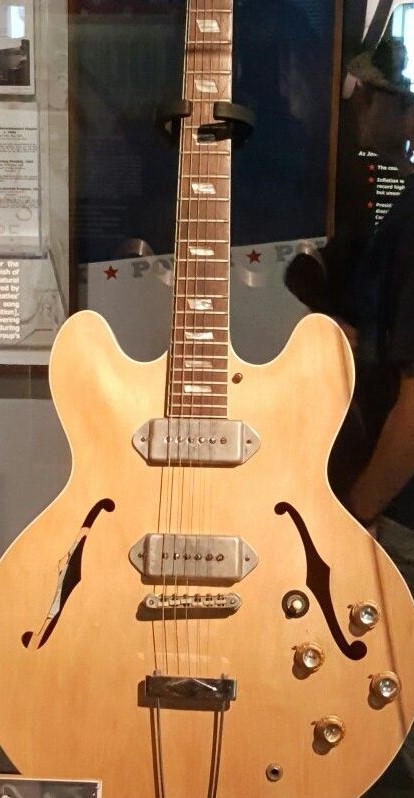 The bridge of the song is then arrived at, this being ten measures long. With a cymbal crash from Ringo, the excitement lulls only slightly, the absence of the tambourine and hand-clapping taking the energy level down by only a notch or two. George's lead guitar ascends and descends repeatedly throughout the first eight measures until it rises to a crescendo in the ninth measure, followed by three bending guitar chords high on his guitar neck. While John plays a staccato rhythm guitar pattern on his Epiphone Casino, Paul keeps up his bass guitar work and Ringo keeps the energy going on the drums by playing another snare drum fill in the final measure, Yoko and Pattie sing “Birthday” in measures one, three and five. Paul and John harmonize lead vocals once again to fill in the gap whenever the girls aren't singing, begging them to “dance” and to “take a cha-cha-cha-chance.” Paul then voices his enthusiasm with a long winded exclamation of “Daaaaaaaaance, yeah” which traverses the final three measures of the bridge. The bridge of the song is then arrived at, this being ten measures long. With a cymbal crash from Ringo, the excitement lulls only slightly, the absence of the tambourine and hand-clapping taking the energy level down by only a notch or two. George's lead guitar ascends and descends repeatedly throughout the first eight measures until it rises to a crescendo in the ninth measure, followed by three bending guitar chords high on his guitar neck. While John plays a staccato rhythm guitar pattern on his Epiphone Casino, Paul keeps up his bass guitar work and Ringo keeps the energy going on the drums by playing another snare drum fill in the final measure, Yoko and Pattie sing “Birthday” in measures one, three and five. Paul and John harmonize lead vocals once again to fill in the gap whenever the girls aren't singing, begging them to “dance” and to “take a cha-cha-cha-chance.” Paul then voices his enthusiasm with a long winded exclamation of “Daaaaaaaaance, yeah” which traverses the final three measures of the bridge.
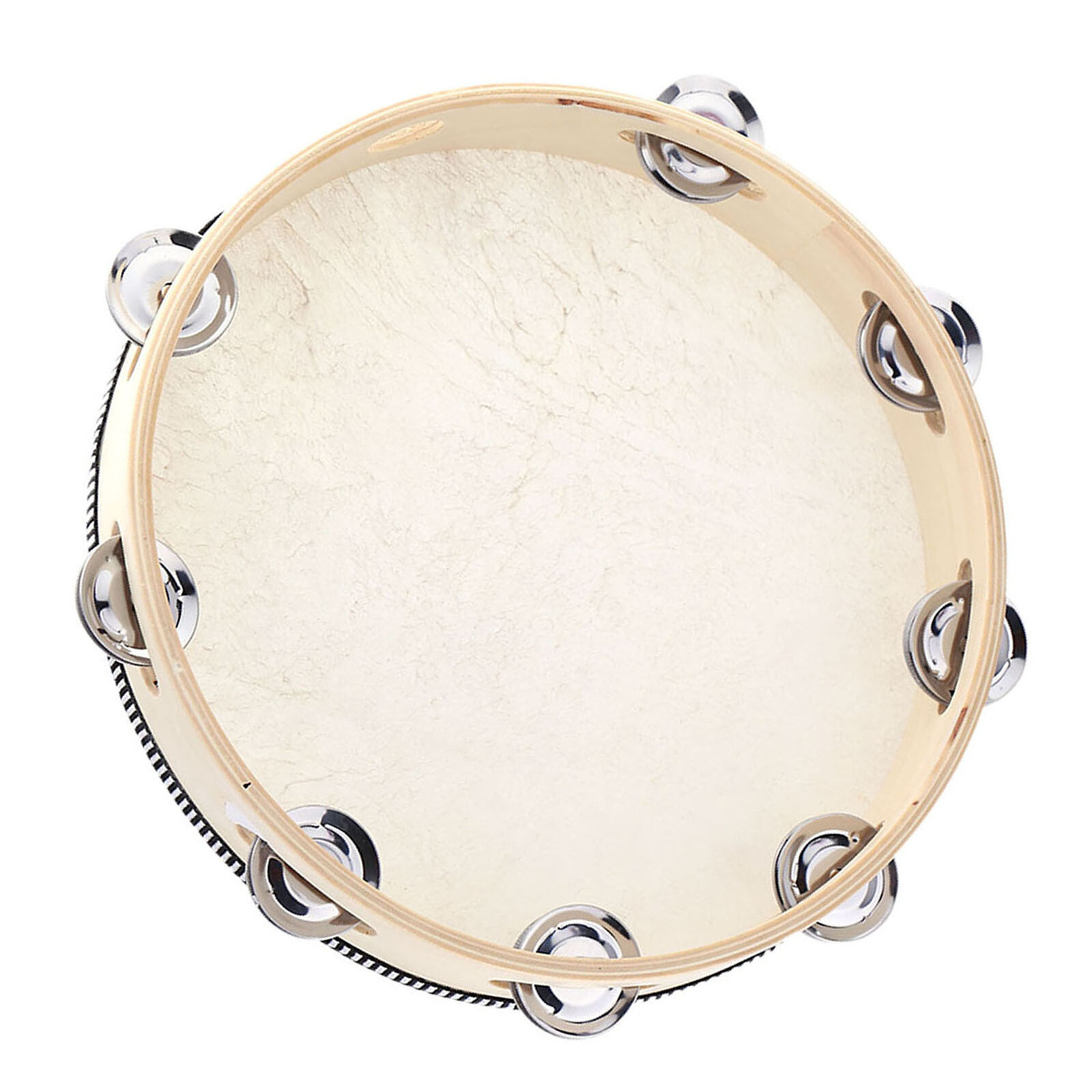 Next comes another instrumental verse, this being identical to the first instrumental verse but with a couple of additional elements. These additions are heard in every even numbered measure, one being Paul's highly altered piano playing and the other being George's rapid-fire tambourine playing. Interestingly, neither of these elements are present in the odd numbered measures – only in the even numbered measures. Next comes another instrumental verse, this being identical to the first instrumental verse but with a couple of additional elements. These additions are heard in every even numbered measure, one being Paul's highly altered piano playing and the other being George's rapid-fire tambourine playing. Interestingly, neither of these elements are present in the odd numbered measures – only in the even numbered measures.
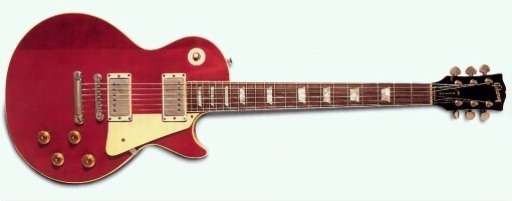 Then comes what we'll call a "segue," a four-measure instrumental section that connects the instrumental verse with a repeat of the bridge that follows. While the song comes to a virtual halt, both George and John play a particular guitar passage on their electric guitars, John the lower octave and George the higher octave on the Gibson Les Paul that Eric Clapton had recently gifted him. Paul also plays the identical riff on bass guitar, all three Beatles playing the exact same guitar riff at the same time. Ringo comes in with a snare beat and cymbal crash in measure two (along with a quick tambourine shake from George) and then repeats the same drum beats in measure four with one additional snare drum beat to take us into the following bridge. Then comes what we'll call a "segue," a four-measure instrumental section that connects the instrumental verse with a repeat of the bridge that follows. While the song comes to a virtual halt, both George and John play a particular guitar passage on their electric guitars, John the lower octave and George the higher octave on the Gibson Les Paul that Eric Clapton had recently gifted him. Paul also plays the identical riff on bass guitar, all three Beatles playing the exact same guitar riff at the same time. Ringo comes in with a snare beat and cymbal crash in measure two (along with a quick tambourine shake from George) and then repeats the same drum beats in measure four with one additional snare drum beat to take us into the following bridge.
This second bridge is nearly identical to its first occurrence, the only differences being a fast-paced snare drum fill from Ringo in the fourth measure, a “woooh” from Paul in the seventh measure, and a seemingly faulty edit of Paul's “Daaaaaaaaaance” scream on the downbeat of the ninth measure.
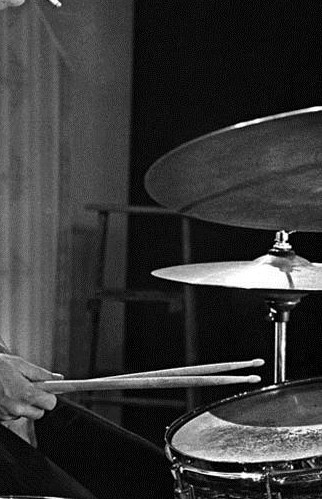 The final verse is next heard, which is in effect a combination of the third instrumental verse (with the unique piano overdub) and the second verse (with Paul and John's harmonized vocals). The handclapping appears here again as well, although at a slower tempo this time around, while George's rapid-fire tambourine plays straight through the entire verse. The verse is actually fourteen measures this time, two more measures being added to bring the song to a suitable conclusion. An anticipated downbeat is accentuated by most of the instrumental elements in the twelfth, thirteenth and fourteenth measures, this last downbeat being the final beat of the song which allows the cymbal crash and final chord to ring out. The most notable element during the fade-out is the highly effected piano chord, with Ken Scott manually switching the amplifier tone on the studio floor, which adds a distinctive touch to this elaborate piece of high-energy rock 'n' roll. The final verse is next heard, which is in effect a combination of the third instrumental verse (with the unique piano overdub) and the second verse (with Paul and John's harmonized vocals). The handclapping appears here again as well, although at a slower tempo this time around, while George's rapid-fire tambourine plays straight through the entire verse. The verse is actually fourteen measures this time, two more measures being added to bring the song to a suitable conclusion. An anticipated downbeat is accentuated by most of the instrumental elements in the twelfth, thirteenth and fourteenth measures, this last downbeat being the final beat of the song which allows the cymbal crash and final chord to ring out. The most notable element during the fade-out is the highly effected piano chord, with Ken Scott manually switching the amplifier tone on the studio floor, which adds a distinctive touch to this elaborate piece of high-energy rock 'n' roll.
American Releases
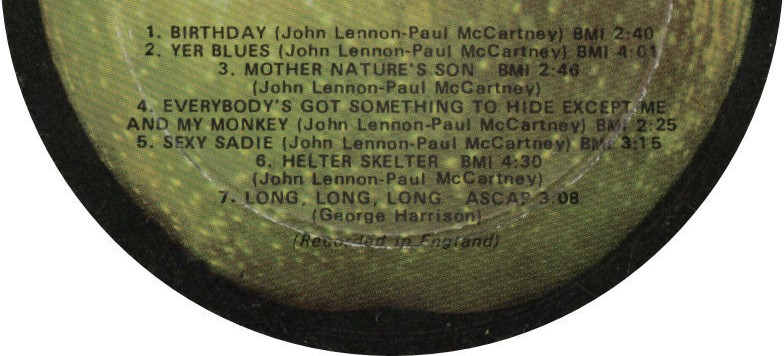 November 25th, 1968, was the US release date for their double-album entitled "The Beatles," better known as the "White Album." "Birthday" was the first track on side three, the perfect opening track for the second disc of this double set, this side featuring a good many high-energy songs. America was only treated to the stereo mix of the album when initially released, the mono vinyl set not being released until September 9th, 2014. A vibrant new stereo mix of the album was also released on vinyl on November 9th, 2018. As for compact disc releases, it first appeared on August 24th, 1987, then as a 30th Anniversary release on November 23rd, 1998, then as a remastered set on September 9th, 2009. November 25th, 1968, was the US release date for their double-album entitled "The Beatles," better known as the "White Album." "Birthday" was the first track on side three, the perfect opening track for the second disc of this double set, this side featuring a good many high-energy songs. America was only treated to the stereo mix of the album when initially released, the mono vinyl set not being released until September 9th, 2014. A vibrant new stereo mix of the album was also released on vinyl on November 9th, 2018. As for compact disc releases, it first appeared on August 24th, 1987, then as a 30th Anniversary release on November 23rd, 1998, then as a remastered set on September 9th, 2009.
.jpg) Sometime in 1969, Capitol released four of the “White Album” tracks, including “Birthday,” on a “Playtape” entitled “The Beatles Vol. IV.” “Playtapes” were a short-lived format used for unique portable tape players as well as standard equipment in some Volkswagen models during the late '60s. They could only contain a small amount of material so Capitol released five volumes to encompass as many songs from the new Beatles album as possible. By the end of the decade, the entire format had ceased to exist. Sometime in 1969, Capitol released four of the “White Album” tracks, including “Birthday,” on a “Playtape” entitled “The Beatles Vol. IV.” “Playtapes” were a short-lived format used for unique portable tape players as well as standard equipment in some Volkswagen models during the late '60s. They could only contain a small amount of material so Capitol released five volumes to encompass as many songs from the new Beatles album as possible. By the end of the decade, the entire format had ceased to exist.
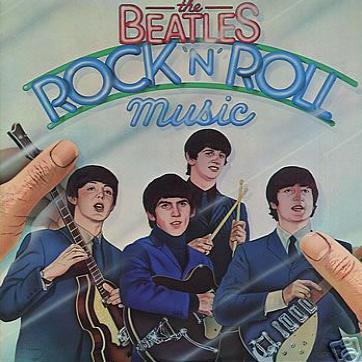 On June 7th, 1976, Capitol put out a double compilation album entitled “Rock 'n' Roll Music” which was meant to be a companion piece to the official “Red Album” and “Blue Album” compilation sets released back in 1973. The focus of this album was The Beatles “rockers,” “Birthday” definitely fitting the bill. George Martin was consulted regarding the preparation of this album and, with access only to the Capitol mixes, decided it was necessary to reverse the right and left channels of the original stereo mix for this release. Then, on October 27th, 1980, Capitol separated the albums in this set and re-released them individually, “Rock 'n' Roll Music: Volume 2” containing "Birthday." On June 7th, 1976, Capitol put out a double compilation album entitled “Rock 'n' Roll Music” which was meant to be a companion piece to the official “Red Album” and “Blue Album” compilation sets released back in 1973. The focus of this album was The Beatles “rockers,” “Birthday” definitely fitting the bill. George Martin was consulted regarding the preparation of this album and, with access only to the Capitol mixes, decided it was necessary to reverse the right and left channels of the original stereo mix for this release. Then, on October 27th, 1980, Capitol separated the albums in this set and re-released them individually, “Rock 'n' Roll Music: Volume 2” containing "Birthday."
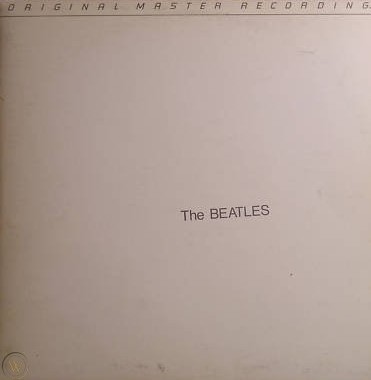 An interesting US vinyl edition of the “White Album” was released on January 7th, 1982, this being manufactured by Mobile Fidelity Sound Lab in Chatsworth, California as part of their "Original Master Recording" series. Their practice was to prepare a new master utilizing half-speed mastering technology from the original master tapes, in this case using the leased sub-master from Capitol Records. This release, which sounded superior to all previous British and American pressings, was packaged in a non-embossed unnumbered cover that did not include the usual poster/lyric sheet or individual Beatles portraits as contained in standard releases. This nonetheless excellent edition of the album was only available for a short time and is quite collectible today. An interesting US vinyl edition of the “White Album” was released on January 7th, 1982, this being manufactured by Mobile Fidelity Sound Lab in Chatsworth, California as part of their "Original Master Recording" series. Their practice was to prepare a new master utilizing half-speed mastering technology from the original master tapes, in this case using the leased sub-master from Capitol Records. This release, which sounded superior to all previous British and American pressings, was packaged in a non-embossed unnumbered cover that did not include the usual poster/lyric sheet or individual Beatles portraits as contained in standard releases. This nonetheless excellent edition of the album was only available for a short time and is quite collectible today.
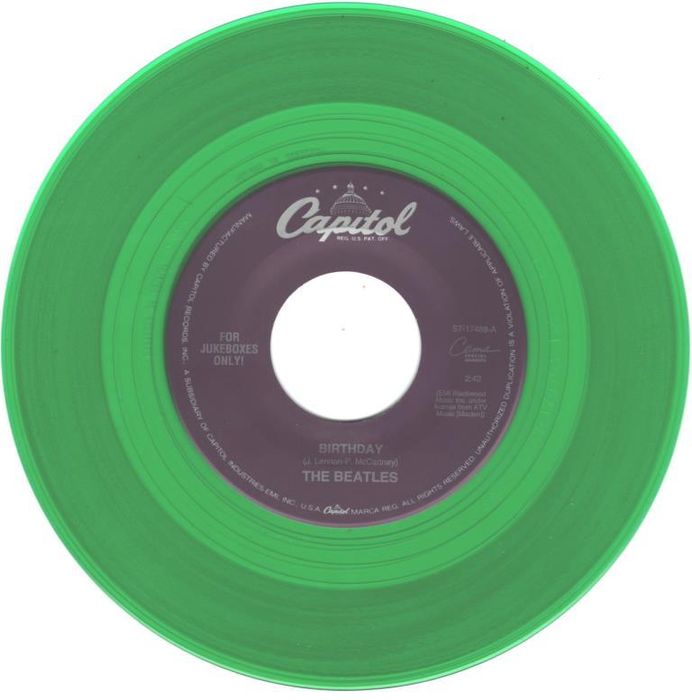 In January of 1994, Capitol thought to issue “Birthday” as a single on their Cema “For Jukeboxes Only” series, allowing jukebox listeners to play this specific song in tribute to a friend who was present who happened to be celebrating a birthday that day (or whoever just liked the song). Although most of the singles were printed on green vinyl, between 25 to 50 pressings were on black vinyl, making these the most valuable to this day. In January of 1994, Capitol thought to issue “Birthday” as a single on their Cema “For Jukeboxes Only” series, allowing jukebox listeners to play this specific song in tribute to a friend who was present who happened to be celebrating a birthday that day (or whoever just liked the song). Although most of the singles were printed on green vinyl, between 25 to 50 pressings were on black vinyl, making these the most valuable to this day.
On September 9th, 2009, the CD box set “The Beatles In Mono” was released which featured the entire “White Album” in mono, the slightly different mono mix of “Birthday” being included. The vinyl edition of this box set was first released on September 9th, 2014.
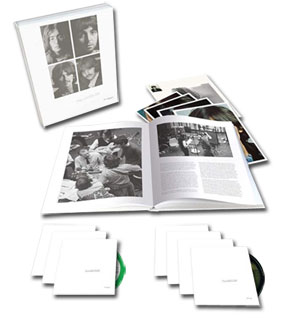 Various editions of the "White Album" were released on November 9th, 2018 to commemorate the 50th Anniversary of its original release. The "Deluxe" edition, which was made available in a 3CD set and a limited edition 180-gram 4LP vinyl set, contained the newly created Giles Martin mix of the "White Album." The "Super Deluxe" 6CD + 1Blu-ray edition also contained "take two" of the rhythm track of "Birthday" as recorded on September 18th, 1968. Various editions of the "White Album" were released on November 9th, 2018 to commemorate the 50th Anniversary of its original release. The "Deluxe" edition, which was made available in a 3CD set and a limited edition 180-gram 4LP vinyl set, contained the newly created Giles Martin mix of the "White Album." The "Super Deluxe" 6CD + 1Blu-ray edition also contained "take two" of the rhythm track of "Birthday" as recorded on September 18th, 1968.
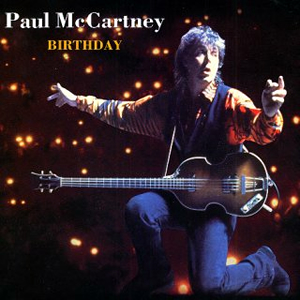 As for Paul's live recording of the song, it was released as a cassette single on October 16th, 1990 in celebration of what would be John Lennon's 50th birthday. The same recording was also included on the November 5th, 1990 released “Tripping The Live Fantastic” double-album as well as the November 12th, 1990 released “Tripping The Live Fantastic: Highlights!” single disc. As for Paul's live recording of the song, it was released as a cassette single on October 16th, 1990 in celebration of what would be John Lennon's 50th birthday. The same recording was also included on the November 5th, 1990 released “Tripping The Live Fantastic” double-album as well as the November 12th, 1990 released “Tripping The Live Fantastic: Highlights!” single disc.
Live Performances
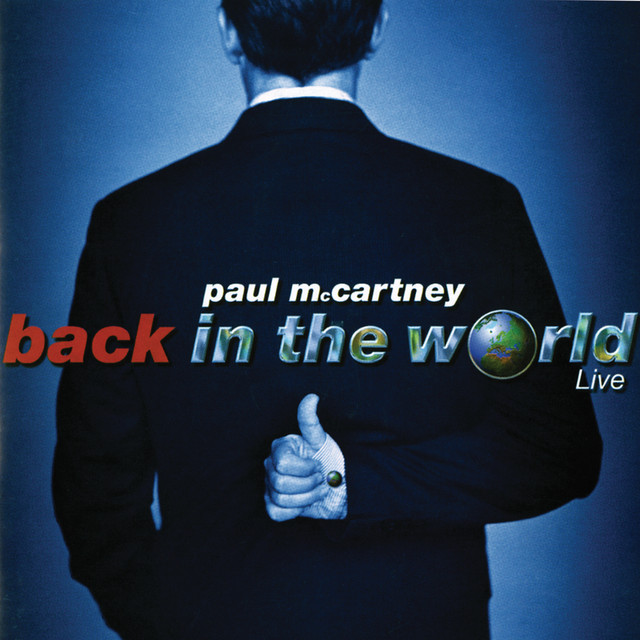 The Beatles never performed "Birthday" live but, as mentioned above, Paul took advantage of this crowd pleasing number during his live career. His first solo "World Tour" featured the song on many of its dates, this tour running from July 26th, 1989 (London, England) to July 29th, 1990 (Chicago, Illinois). His "Back In The World" tour also featured the song, this tour spanning from March 25th (Paris, France) to June 1st, 2003 (Liverpool, England), although "Birthday" was not featured on this tour's live album. Then he performed it during his "Out There" tour, sometimes during his first encore and, for his 2015 dates, as the opening song. This tour spanned from May 4th, 2013 (Belo Horizonte, Brazil) to October 22nd, 2015 (Buffalo, New York). He also periodically performed the song as an encore during his "One On One" tour, which ran from April 13th, 2016 (Fresno, California) to December 16th, 2017 (Aukland, New Zealand) and his "Freshen Up" tour, which began on September 17th, 2018 (Quebec City, Canada) and concluded on July 13th, 2019 (Los Angeles, California). Paul then included it at every date of the 2022 leg of his "Got Back" tour, which ran from April 28th (Spokane, Washington) to June 25th (Pilton, England) of that year, as well as many shows on the 2023/2024 legs of this tour, which stretched from October 28th, 2023 (Adeladie, Australia) to December 19th, 2024 (London, England). The Beatles never performed "Birthday" live but, as mentioned above, Paul took advantage of this crowd pleasing number during his live career. His first solo "World Tour" featured the song on many of its dates, this tour running from July 26th, 1989 (London, England) to July 29th, 1990 (Chicago, Illinois). His "Back In The World" tour also featured the song, this tour spanning from March 25th (Paris, France) to June 1st, 2003 (Liverpool, England), although "Birthday" was not featured on this tour's live album. Then he performed it during his "Out There" tour, sometimes during his first encore and, for his 2015 dates, as the opening song. This tour spanned from May 4th, 2013 (Belo Horizonte, Brazil) to October 22nd, 2015 (Buffalo, New York). He also periodically performed the song as an encore during his "One On One" tour, which ran from April 13th, 2016 (Fresno, California) to December 16th, 2017 (Aukland, New Zealand) and his "Freshen Up" tour, which began on September 17th, 2018 (Quebec City, Canada) and concluded on July 13th, 2019 (Los Angeles, California). Paul then included it at every date of the 2022 leg of his "Got Back" tour, which ran from April 28th (Spokane, Washington) to June 25th (Pilton, England) of that year, as well as many shows on the 2023/2024 legs of this tour, which stretched from October 28th, 2023 (Adeladie, Australia) to December 19th, 2024 (London, England).
 Arguably the best live rendition of “Birthday” there ever was happened on July 7th, 2010, which was Ringo's 70th birthday. During a performance of Ringo's All-Starr Band at Radio City Music Hall in New York City on that day, Paul surprised him by coming on stage with his trademark Hofner bass guitar and, with Ringo and the entire band (including lead guitarist Joe Walsh), Paul led them through a rousing rendition of this celebrated “White Album” track. Obviously emotional and overwhelmed, Ringo emerges from the drums after the song is over and approaches Paul for a long embrace, Paul even kissing him twice on the cheek. Arguably the best live rendition of “Birthday” there ever was happened on July 7th, 2010, which was Ringo's 70th birthday. During a performance of Ringo's All-Starr Band at Radio City Music Hall in New York City on that day, Paul surprised him by coming on stage with his trademark Hofner bass guitar and, with Ringo and the entire band (including lead guitarist Joe Walsh), Paul led them through a rousing rendition of this celebrated “White Album” track. Obviously emotional and overwhelmed, Ringo emerges from the drums after the song is over and approaches Paul for a long embrace, Paul even kissing him twice on the cheek.
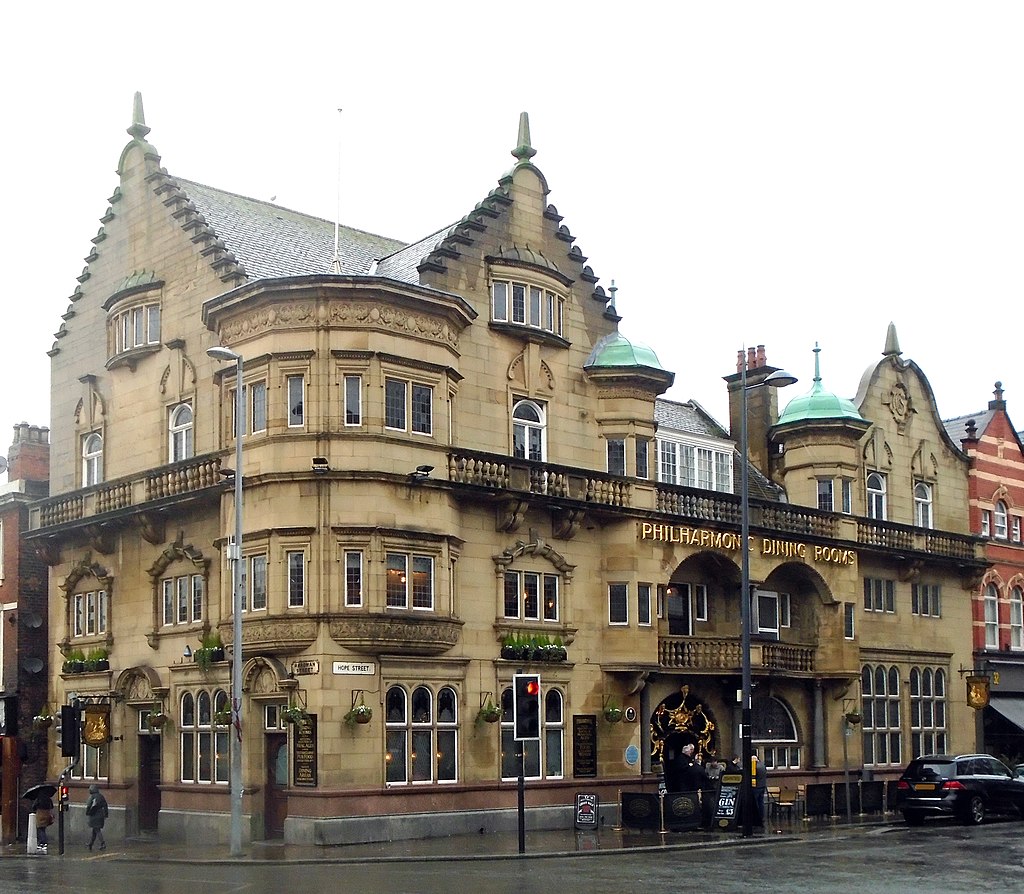 One other performance of note was during Paul's appearance at the Philharmonic Pub in Liverpool on June 9th, 2018, this being part of a filmed sequence for "The Late Late Show With James Corben." A truncated version of this performance was aired on a CBS television special entitled "When Corden Met McCartney, Live From Liverpool" on August 20th of that year. One other performance of note was during Paul's appearance at the Philharmonic Pub in Liverpool on June 9th, 2018, this being part of a filmed sequence for "The Late Late Show With James Corben." A truncated version of this performance was aired on a CBS television special entitled "When Corden Met McCartney, Live From Liverpool" on August 20th of that year.
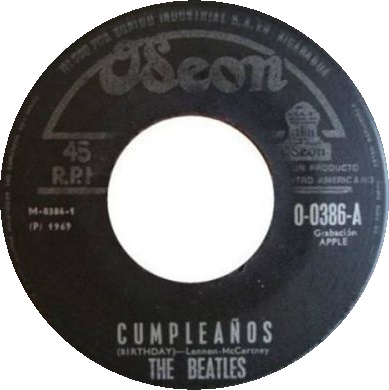
"Birthday" single release from Nicaragua
Conclusion
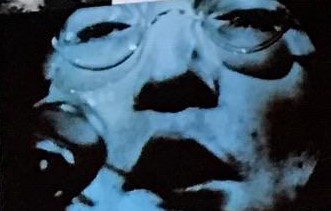 Say what you will about The Beatles being uncooperative and falling apart as a group at this point in their career, as well as John's statement twelve years later about this song being "a piece of garbage." I'm sorry, but it seems obvious from listening to and examining this track that everyone involved in creating and recording “Birthday” on this day, Lennon included, really enjoyed themselves. Enthusiasm was running high, camaraderie was intact, and everyone put away the beefs they had with each other and let it rip, creating “Heavy Metal Beatles” that was sure to please '50s rock enthusiasts, as well as “Head-Bangers,” for generations to come! Say what you will about The Beatles being uncooperative and falling apart as a group at this point in their career, as well as John's statement twelve years later about this song being "a piece of garbage." I'm sorry, but it seems obvious from listening to and examining this track that everyone involved in creating and recording “Birthday” on this day, Lennon included, really enjoyed themselves. Enthusiasm was running high, camaraderie was intact, and everyone put away the beefs they had with each other and let it rip, creating “Heavy Metal Beatles” that was sure to please '50s rock enthusiasts, as well as “Head-Bangers,” for generations to come!
Song Summary
"Birthday"
Written by: John Lennon / Paul McCartney
- Song Written: September 18, 1968
- Song Recorded: September 18, 1968
- First US Release Date: November 25, 1968
- First US Album Release: Apple #SWBO-101 “The Beatles”
- US Single Release: Capitol Cema #S7-17488
- Highest Chart Position: n/a
- British Album Release: Apple #PCS 7067-7068 “The Beatles”
- Length: 2:40
- Key: A major
- Producer: Chris Thomas
- Engineers: Ken Scott, Mike Sheady
Instrumentation (most likely):
- Paul McCartney - Lead and Backing Vocals, Bass (1964 Rickenbacker 4001 S), Piano (1964 Challen upright 861834)
- John Lennon - Lead and Backing Vocals, Lead and Rhythm Guitar (1965 Epiphone ES-230TD Casino)
- George Harrison - Lead and Rhythm Guitar (1957 Gibson Les Paul), backing vocals, tambourine
- Ringo Starr - Drums (1964 Ludwig Super Classic Black Oyster Pearl), handclaps
- Yoko Ono - Backing Vocals
- Pattie Harrison - Backing Vocals
- Eric Clapton? - Backing Vocals
- Mal Evans - handclaps
Written and compiled by Dave Rybaczewski
|
IF YOU WOULD LIKE TO MAKE A DONATION TO KEEP THIS WEBSITE UP AND RUNNING, PLEASE CLICK BELOW!
Sign Up Below for our MONTHLY BEATLES TRIVIA QUIZ!
|